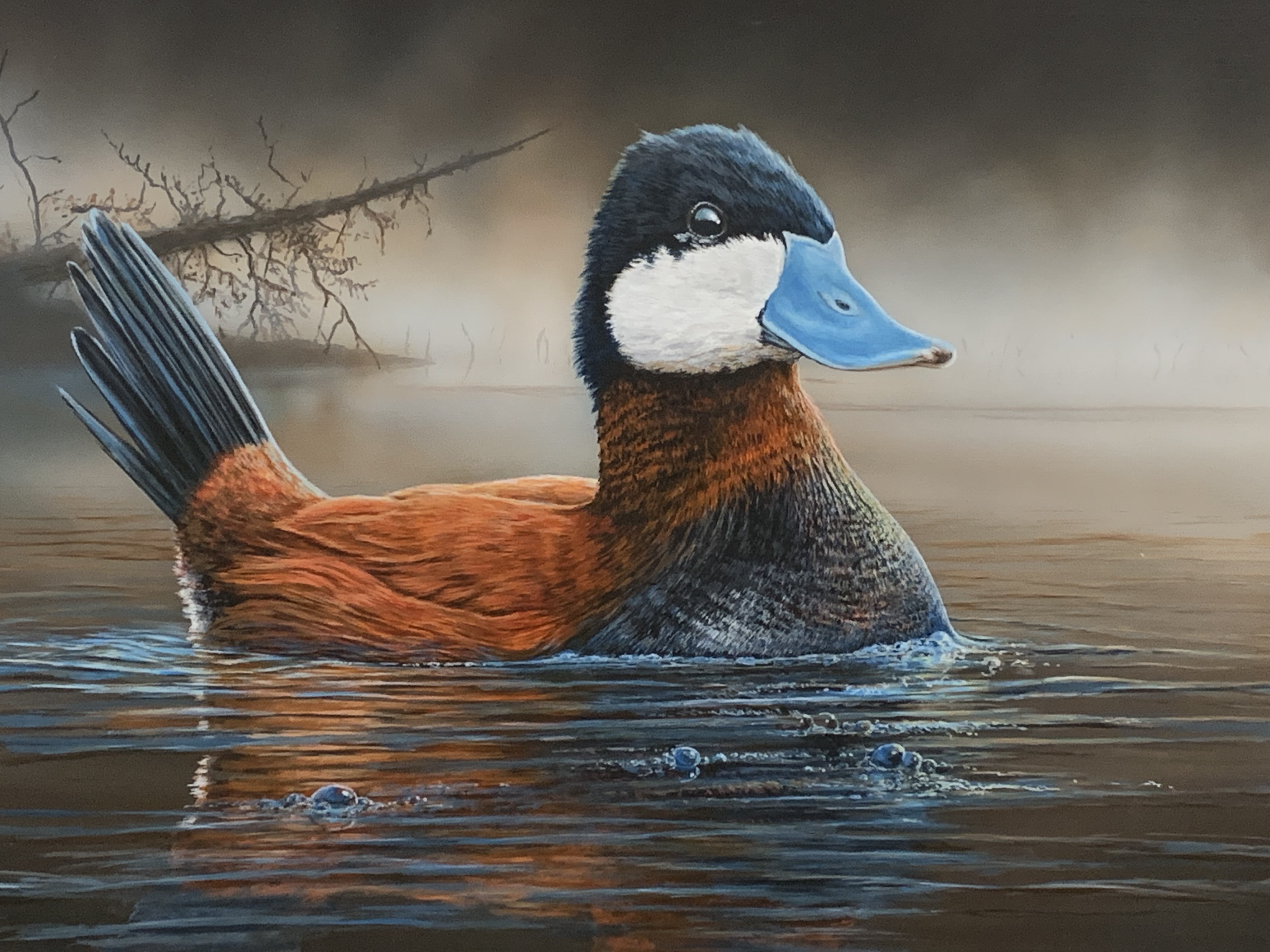Louisiana Duck Stamp Program
The Duck Stamp Program began in 1988 with the Louisiana Legislature authorizing the creation of the Louisiana Waterfowl Conservation Stamp (Louisiana Duck Stamp) Program, with the purpose of securing revenue to create, enhance, and protect wetland habitats to benefit Louisiana’s ducks and geese. The projects these funds have facilitated over the years have, and continue to, benefit not only ducks and geese but countless additional wetland birds and other wildlife, in addition to providing and enhancing recreational pursuits of hunters, bird watchers, tourists, and any other citizens that appreciate wetlands, wetland wildlife, and the ecological services they offer.
In 2021, the Louisiana Duck License, Stamp, and Print Fund was created with the condition that half of the monies deposited shall be used solely for in-state waterfowl management programs and purchases. The other half may be dedicated to migratory waterfowl breeding grounds preservation by the commission. In total, the duck stamp program has generated more than 17 million in revenue and recently averages nearly $400,000 per year. It funds such projects as those achieved through North American Wetlands Conservation Act (NAWCA) grants, including the Louisiana Waterfowl Program and the Fall Flights Program internationally. Proceeds are also used for implementation of the Louisiana Mottled Duck Program, Coastal Grasslands Restoration Initiative Program (CGRIP), and occasionally used as matching funds for select waterfowl research projects.
Louisiana Duck Stamp Contest
The featured species for the 2025 Louisiana Duck Stamp contest will be the black-bellied whistling duck. Artists are also reminded of the requirement for associated habitat.
Colloquially referred to as “black-bellied tree ducks” or “Mexican squealers,” this waterfowl species is one of the few that has not previously been the subject of Louisiana’s duck stamp art competition, now in its 37th year,’’ said Waterfowl Program Manager Jason Olszak.
Classified in the waterfowl subfamily Dendrocygninae, the “whistling” or “tree” ducks, two of which are common to Louisiana (black-bellied and fulvous), are highly gregarious and vociferous. They are neither true ducks nor geese but exhibit traits and behaviors in common with both. Like geese, whistling duck plumage is identical among the sexes, both of which care for the young. Male whistling ducks will even share in incubation efforts. They form pair bonds lasting more than one year and are as comfortable on land as they are in water. Similar to ducks, they breed in their first year and lay relatively large clutches of eggs, on average 13.4. They nest in both tree cavities, including artificial nest boxes, and on the ground, and have the propensity to be prolific nest parasites, laying eggs in the nests of other individuals, even other species.
Once considered a tropical species, black-bellies have expanded their range broadly in the last two decades. Before the end of the 20th century, the species spanned northern South America, Central America, and Mexico up through southern Texas and were occasionally observed in southwestern Louisiana. Since that time, their range has expanded both northward and eastward to include observations in every Mississippi and Atlantic Flyway state and parts of southeastern Canada. Successful breeding populations now range as far north as Tennessee. Black-bellies are a very “watchable” wildlife species as they are tolerant of suburban and even urban environments and disturbances and can occasionally reach near-nuisance levels of abundance in some locations.

2025 Entry Information
To enter, an artist must submit an original, unpublished work of art, along with a signed and notarized artist's agreement and a $50 entry fee to:
Attn: Louisiana Waterfowl Conservation Stamp Program
2000 Quail Drive
Baton Rouge, LA 70808
Entries will be accepted from October 14-22, 2024, with the contest to be held in the Joe Herring Louisiana Room at the LDWF Headquarters building, beginning at 10 am on October 23, 2024. The public is invited to attend.
The contest is open to all artists 18 years of age and older. Employees of LDWF and members of their immediate families are ineligible.
Please note the guidelines regarding the rules regarding the shipping of paintings implemented in 2020. LDWF wants to minimize the risk of damage during the shipping of contest entries.
Judging
A panel of judges with experience in waterfowl biology and/or artistic method will select the winning design based on the following criteria:
- Accuracy of form, size, proportion, color, and posture
- Level and accuracy of detail in all aspects of the waterfowl
- Appropriateness, accuracy, and detail in depiction of the habitat.
- Attractiveness and creativity in composition, subject, background, and lighting
- Suitability for reproduction as stamps and prints.
2024 Louisiana Duck Stamp Winner

Anthony J. Padgett of Noblesville, Indiana, won the 2024 Louisiana Waterfowl Conservation Stamp Competition sponsored by the Louisiana Department of Wildlife and Fisheries (LDWF).
